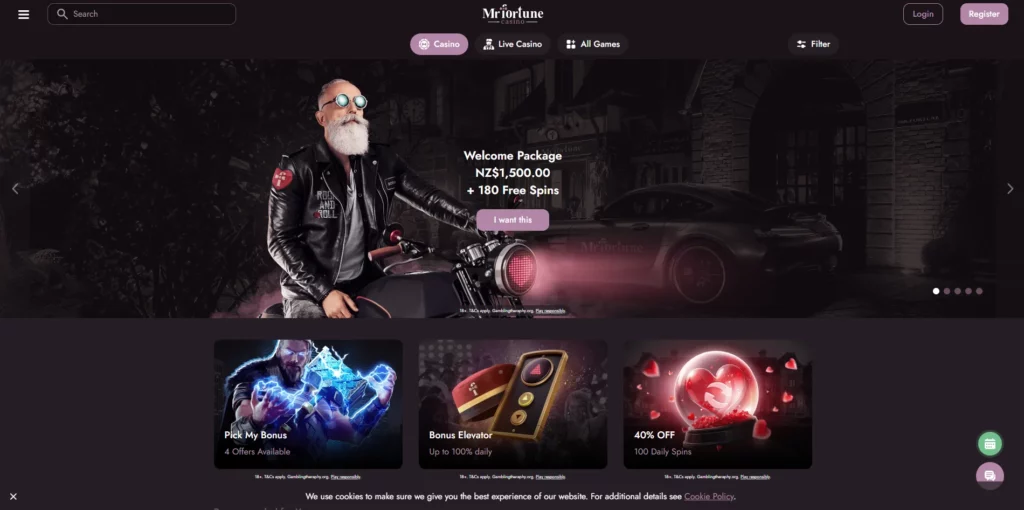How casino lights and colors affect your mind

Table of Contents
How Casino Lights and Colors Affect Your Mind
Every casino, both brick-and-mortar and digital, seems to hum with its own strange energy. The lighting, the hues, the glint of screens and machines—they all merge into a sort of visual hypnosis. Step inside or log in, and suddenly your focus tightens, time blurs, and the world outside fades. Many players, myself included, have paused to wonder if that effect is coincidence or careful design. Spoiler: it’s design. In fact, light and color play such a large role in how we perceive risk, reward, and excitement that casinos have built their identities around it.
Even online, the same principles translate across pixels and animations. Sites like play at mrfrotune demonstrate this through their interface—bright visuals, subtle movements, welcoming palettes. They invite rather than pressure you. It’s a sensory balance that few users consciously notice, but nearly everyone feels. Oddly enough, part of the attraction might come from not realizing how much these cues matter.
The Psychology Behind Casino Lights
Certain lights are designed to keep your attention. Casinos rarely use natural light; instead, they favor shimmering reds, radiant golds, and perpetual motion displays that simulate vibrancy. That’s because your brain subconsciously associates brightness and warm color tones with action and reward.
Ambient Glow and Perception of Time
Have you ever noticed most casinos feel timeless? Part of that is due to controlled lighting. Without changes in daylight or clocks around, your body loses track of time. Online platforms replicate this subtly, through never-ending spin animations, sparkles, and shifting gradients. The flow feels continuous and, therefore, endless.
How Colors Shape Decision-Making
Color psychology has been researched for decades, and casinos have perfected the art of using it. Bright reds and golds convey excitement and power. Deep blues or purples imply mystery, trust, or even luxury. Even the specific shade of green used on tables or interface buttons can influence perception—lighter greens evoke friendliness, darker ones suggest sophistication.
Warm Versus Cool Tones
Warm tones—like crimson or amber—tend to accelerate heart rate slightly. That makes people feel more energized, possibly eager to take chances. Cool tones, on the other hand, offer a sense of calm that can encourage longer play sessions. It’s like being wrapped in light rather than surrounded by it. Casinos adjust these blends depending on what part of the experience they want to emphasize.
Online Casinos and Digital Light Effects
Online gaming spaces can’t replicate the hum of nearby slot machines or physical glitter of chips, but they’ve built equally potent visual landscapes through design. The digital interface can fine-tune animations and light flows in a way that real spaces never could. That’s intentional—developers know how to spark tiny dopamine hits with every spin, tap, or flicker.
- Slot animations often use bursts of gold or sparks of light after near-wins to tease reward without frustration.
- Loading screens typically showcase dark-to-light transitions to simulate progression and achievement.
- Game icons flash briefly when hovered over, signaling immediate engagement opportunity.
Tooltip Demonstration
If you hover over this tooltip, imagine that same visual microinteraction scaled across hundreds of slots. Small but deliberate touches help sustain focus, which naturally prolongs playtime.
Designing Atmosphere to Influence Mood
Casinos don’t just light a room; they sculpt an environment. Everything from the floor reflections to ceiling height contributes to atmosphere. In online spaces, that same idea translates into layout, contrast, movement speed, and spatial flow. Designers understand that visual fatigue discourages risk-taking, so they subtly maintain balance between stimulation and comfort.
Comparative Table of Light and Color Effects
| Light or Color Type | Psychological Effect | Common Casino Usage |
|---|---|---|
| Warm Light (Amber/Gold) | Stimulates excitement and warmth | Used in jackpot celebrations, welcome banners |
| Cool Light (Blue/Violet) | Encourages calm and focus | Applied in lobbies or user dashboards |
| Dynamic Color Shifts | Maintains interest and anticipation | Common in spinning reels, interactive bonus rounds |
Perhaps unintentionally, these subtle cues make the whole gambling experience feel more personal. Each light appears to respond to the player’s input. It’s less about manipulation and more about sensory orchestration. Casinos have found that harmony keeps users pleasantly attentive.
Cognitive Strategies and Player Reactions
A recurring phenomenon among players is that lighting and colors can change their internal sense of control. The brighter and more dynamic a display, the more users feel like something exciting must be happening, even when results are statistically even. This illusion of movement ties into emotional engagement more than rational thought.
- Lights create a feedback loop where reward anticipation grows faster than logical evaluation.
- Colors prime emotional states before decisions are made.
- Constant transitions prevent boredom and promote “just one more spin” behavior.
- Sound, when synced with color flashes, amplifies perceived success.
- That’s why responsible platforms now add breaks or darker intervals to reduce intensity.
- Even minor design pauses help restore cognitive balance.
Conclusion
The visual language of casinos is a deliberate blend of art, psychology, and subtle persuasion. The glow that wraps around tables or the flicker of an online slot isn’t random, it’s meticulously crafted to sustain engagement. Colors carry moods, lights whisper encouragement. They can comfort, excite, or challenge. And truthfully, part of the charm of gambling comes from that interplay between what you see and what you feel.
Whether entering a grand casino hall or scrolling through an online platform late at night, the effect is unmistakable. The hues, brightness, and endless shimmer tell your mind that something is always about to happen, that maybe your next move might just change everything. Maybe that’s the real secret behind why these spaces, digital or physical, never quite lose their allure.
